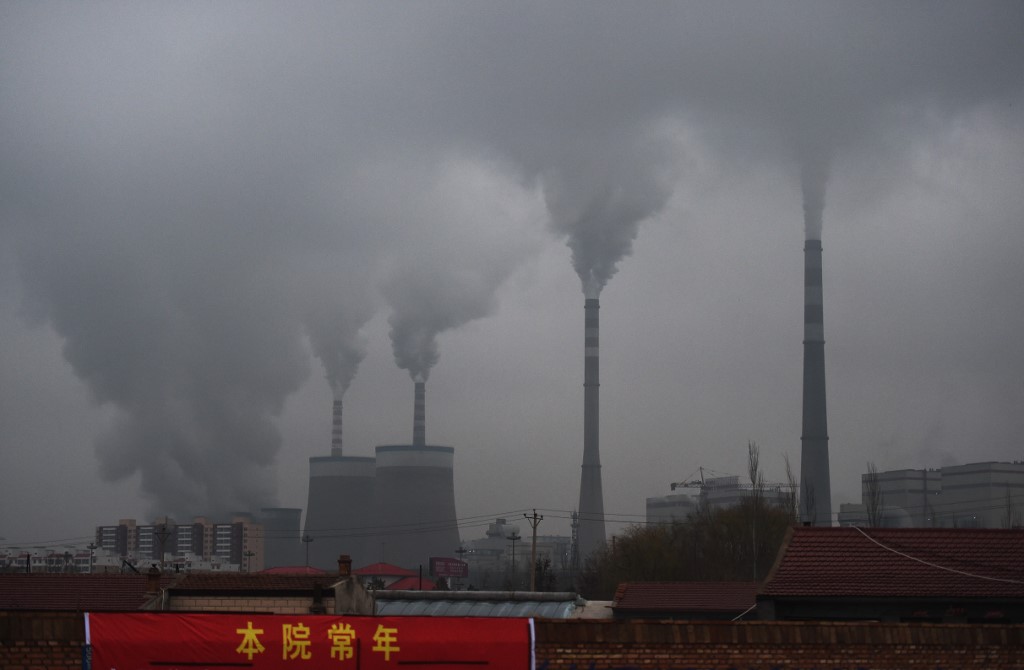(ATF) China is readying its long-awaited national carbon emissions trading scheme (ETS) for the first transaction by the end of June, creating what is expected to be “the world’s largest” carbon trading market worth 150 billion yuan ($22.8 billion).
The world’s largest source of greenhouse gas emissions is using the national ETS as a measure to speed up pollution control and help become carbon neutral by 2060 – a bold commitment that President Xi Jinping made in September at a virtual session of the United Nationals General Assembly.
“The majority of the construction of the national ETS has been completed. A comprehensive integration test between the trading platform in Shanghai and the registration platform in Hubei province is being carried out, aiming for an official launch and the first transaction by the end of June,” Liu Jie, general manager of Shanghai Environment and Energy Exchange, told China Securities Journal.
The Shanghai-based exchange is responsible for constructing the ETS trading system.
A two-year quota of carbon dioxide emissions, with 4 billion tonnes per year, has been granted to power-generating companies that will be the first to participate in the scheme, Liu added.
Meanwhile, a source at China Hubei Emission Exchange, which is responsible for building the registration platform for the ETS, said most of the 2,225 power-generating companies have completed their account set-up.
Carbon trading allows companies to buy and sell the “right to pollute” from each other, creating a financial incentive to curb emissions.
China, the world’s second-largest economy, surpasses the emission levels generated by the US and Europe combined. The country is responsible for 10 billion tonnes of carbon dioxide emissions annually, or about 30% of the global amount.
Multi-level market planned
“We will gradually launch the trading of carbon financial derivatives, such as forward contracts and futures, to form a multi-level carbon market,” Liu revealed. “The next step will be to explore the introduction of financial institutions into the market, which will bring more liquidity.”
Besides the power-generating sector, companies in seven other high energy consumption sectors such as petrochemical, chemicals, construction materials, and non-ferrous metals are expected to be gradually included in the scheme as well during China’s 14th Five Year period (2021-25). A total of up to 10,000 companies will be given permits to trade in the national ETS.
Guorong Securities estimates the total market capitalisation of China’s carbon trading market to be approximately 150 billion yuan ($22.8 billion) based on the designed scale. If including derivatives such as carbon futures, the market can reach 600 billion yuan (over $91 billion), they said.
“Carbon trading is a market-oriented means to control greenhouse gas emissions. Compared with administrative measures, carbon trading helps to reduce overall costs and provides more flexibility to enterprises,” Chen Li, chief economist from Chuancai Securities, said.
Local pilots to co-exist with the national system
Starting in 2011, China has carried out local pilot projects on carbon trading in regions such as Beijing, Tianjin, Shanghai, Hubei province, and Fujian province.
These pilot schemes will co-exist with the national ETS, and companies not given permits for the national scheme can continue trading in the local ones, Liu said.
As of the end of November 2020, the cumulative trading volume from the local pilots was equivalent to 430 million tonnes of carbon dioxide, with a cumulative turnover of about 10 billion yuan ($1.5 billion).
“The total carbon trading volume from the local pilots has fallen short of expectation. The coverage of sectors has been inadequate, and the pricing of carbon quotas varies from region to region. It is urgent to set up a unified national emission trading scheme that can effectively help curb and reduce greenhouse gas emission through a market-driven approach,” Chen from Chuancai Securities said.
For example, the average price for carbon quota in Beijing is above 80 yuan per tonne while that in Shanghai is 40 yuan, and in other regions the price is between 20-50 yuan, he said.
There has been a lack of motivation for companies to engage in carbon trading because of low carbon prices in most regions, a policy study by a team from the Central Bank Research Bureau found.
In many of the regions, carbon quota rolled over from previous years has resulted in a surplus of supply, and the pandemic has reduced the demand, the report, cited by Chinese news outlet The Paper in January, said.
China’s carbon market incomplete, study finds
The same study has voiced reservations about the current global carbon market, saying it faces four main “contradictions” – market segmentation, uncertainties (or risks), low carbon prices, and insufficient capacity for carbon finance innovation, according to a report in The Paper, a Chinese news outlet, in January.
China’s carbon market has a solid foundation and huge potential to be an important market-oriented emission reduction tool, the report said. However, the study also noted that since a unified national carbon market has just started, it needs to find effective solutions to outstanding problems such as an imperfect policy framework, insufficient degree of financialisation, and the “inadequate” role of the carbon market.
The overall policy framework of China’s carbon market is incomplete and its international status is low.
The degree of financialisation in China’s carbon market is generally low, the study said. Although pilot regions and financial institutions have developed products such as carbon bonds, carbon futures, carbon options, and carbon funds, carbon finance is still in a sporadic pilot state. Regional development is uneven, and there is a lack of a systematic and complete carbon finance market, so it “could not meet control requirements”.
Companies producing carbon emissions did not have the capacity to manage carbon trading in areas such where ‘Belt and Road’ projects were undertaken. And professional investors were ‘underdeveloped’, while the carbon finance sector lacked long-term financial support. So, China’s carbon market was not working, it said.
The research team noted that international practice had shown that a carbon finance market is highly dependent on intense carbon emission controls and mature carbon emission rights with a spot trading market. Unlike Europe and the US, where financial functions are built into the carbon market, carbon finance is a more subordinate market tool for carbon emission reduction, it said. This was an important reason for the insufficient outcome.
The other key factor driving implementation of a more credible system in China is the fact that major trading partners such as the European Union and the United States now have leaders who rate global warming as an international priority. Indeed, analysts say failure to take significant action to curb emissions could hamper trade and economic relations with these two regions.
Besides China, the United Kingdom and Germany are also aiming to launch national ETS this year.
SEE ALSO:
China to launch national emissions trading scheme in mid-2021
PBoC outlines shortcomings in China’s carbon trading scheme
China must nix its coal addition to reach carbon neutral pledge
























